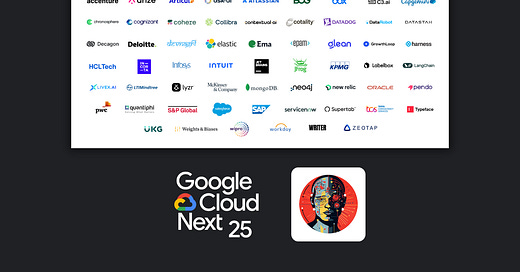Google Cloud Next 2025: AI agents arrive, creativity gets supercharged, and the cloud gets smarter
Our new series breaks down major AI events—starting with everything essential from Google Next '25.
Google Cloud Next 2025, held in Las Vegas, is marking a significant moment for the cloud provider, doubling down on AI not just as a feature, but as the core engine driving the future of cloud computing and business transformation. While showcasing advancements across infrastructure, security, and collaboration, the undeniable headline was the pervasive integration of AI, particularly through increasingly sophisticated models and the burgeoning concept of AI agents designed to automate complex tasks across various enterprise functions.
For general tech users and specifically for writers and content creators, the event unveiled tools and capabilities poised to reshape workflows and unlock new possibilities.
AI takes center stage with smarter models and broader reach
The event underscored Google's commitment to its Gemini family of AI models, emphasizing their growing adoption and enhanced capabilities. Usage of Vertex AI, Google Cloud's platform for building, deploying, and scaling machine learning models, has reportedly surged 20 times over the past year, indicating significant enterprise interest in leveraging Google's AI infrastructure.
A key announcement was the upcoming preview of Gemini 2.5 Flash. Positioned as a "workhorse model," Flash is optimized for speed, low latency, and cost-efficiency, making it suitable for high-volume, real-time applications like customer service interactions or summarizing information on the fly. It features a dynamic 'thinking budget' that adjusts processing time based on query complexity, balancing speed and accuracy, with users also gaining granular control over this budget for specific needs. This focus on efficiency addresses a critical enterprise concern as AI deployments scale.
Furthermore, Google is extending its AI reach beyond the public cloud. Gemini models and Google Agentspace search capabilities are slated to become available on Google Distributed Cloud (GDC), enabling organizations to utilize these advanced AI tools within their own data centers or edge locations, crucial for industries with strict data residency or low-latency requirements.
The rise of AI agents promises automated workflows
A major theme emerging from Next '25 was the transition towards agentic AI – systems capable of performing complex, multi-step tasks autonomously. Google envisions a future where AI agents work alongside humans, handling routine processes and augmenting decision-making.
To facilitate this, Google introduced Agentspace, a platform designed to help organizations discover, create, manage, and govern AI agents at scale. This platform aims to simplify the adoption and deployment of multi-agent systems.
Complementing Agentspace are new tools for developers:
Agent Development Kit (ADK): An open-source framework intended to simplify the building of sophisticated, Gemini-powered agents capable of using tools, reasoning, and completing complex tasks, while allowing developers to maintain control.
Agent2Agent (A2A): A new open protocol designed to give agents, regardless of their underlying framework or vendor, a common language to communicate and collaborate within an enterprise ecosystem.
These initiatives signal Google's ambition to create an open ecosystem for AI agents, moving beyond single-prompt interactions towards AI systems that can proactively manage workflows, from customer service inquiries handled by AI to complex data analysis and software development tasks.
The ability for agents built on different platforms to communicate via A2A is particularly noteworthy, potentially fostering interoperability.





